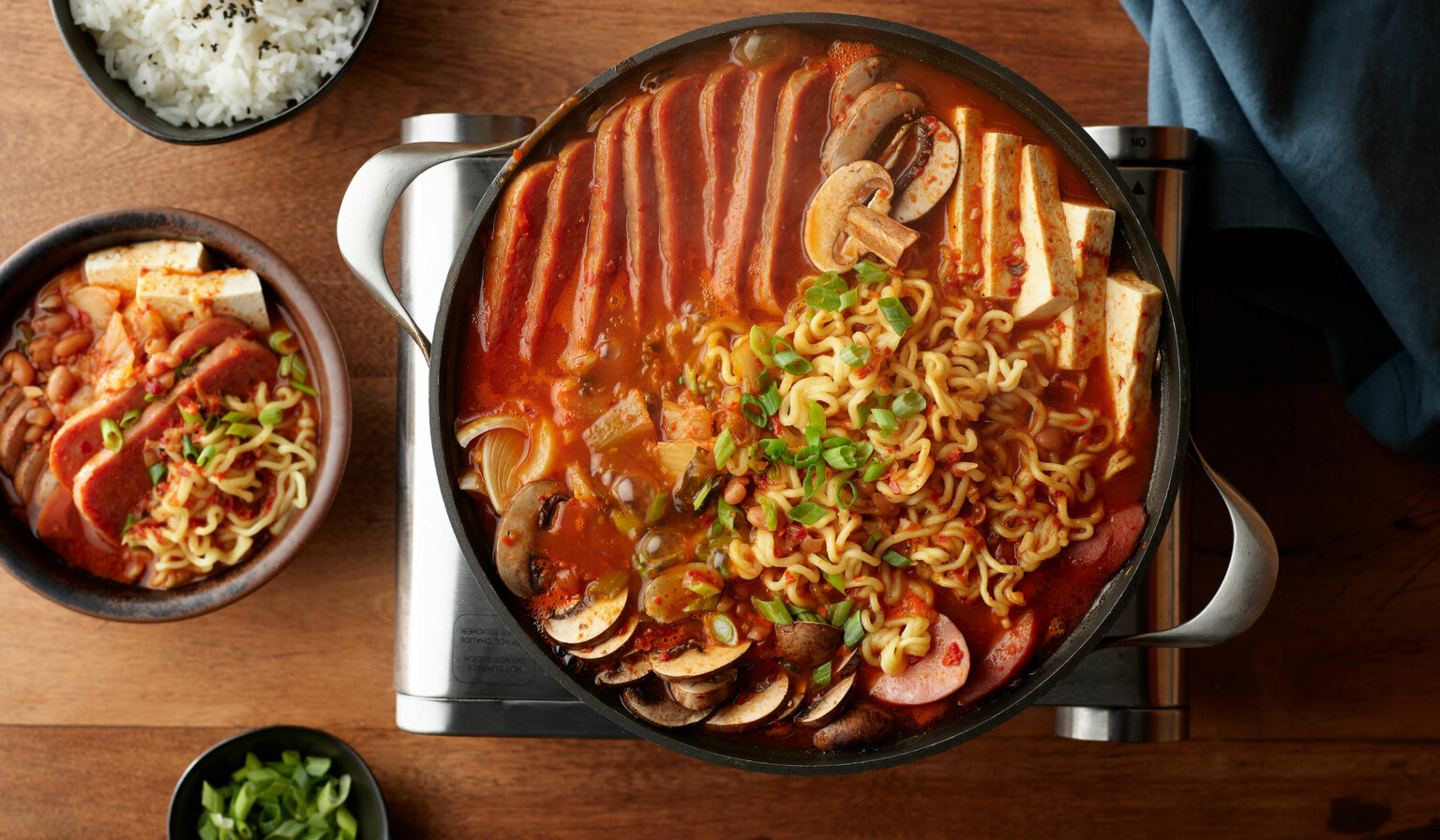Traveling the world as director of marketing for the SPAM® brand, Jason Baskin is used to the fact that just about everyone he meets is familiar with the product he represents. Still, on a recent visit to the small town of Uijeongbu in South Korea, he and his co-workers were surprised to be treated like celebrities. Arriving for lunch they were met by a welcoming banner, an outpouring of enthusiasm from the owner, and even gifts given in honor of the occasion. Uijeongbu is the reported birthplace of one of the country’s most famous comfort foods, budae-jjigae, aka “army stew,” for which SPAM® products are a central ingredient. Indeed, just weeks before, South Korean President Yoon Suk Yeol had dined on budae-jjigae at the same restaurant.
“They were just so honored to have us there,” Baskin says. “And we were so honored to be there representing a brand that had become so influential in their culture. SPAM® products aren’t only at the heart of army stew, it is an iconic brand across the country. A gift pack of SPAM® products is considered a prized item at holidays.”

Budae-jjigae, which Anthony Bourdain called “a classic example of necessity being the mother of deliciousness,” became a staple of the country’s cuisine during the hardships brought on by the Korean war and its aftermath. The dish is a spicy stew born from the fusion of SPAM® products from American military rations and Korean culinary ingenuity. A typical bowl features spicy broth laden with kimchi, gochugaru (red pepper flakes), gochujang (red pepper paste), SPAM® classic, hot dogs, baked beans, instant ramen noodles and American cheese. It may be the first example of Korean/American culinary fusion.
It certainly wasn’t the last. Korean flavors, once confined to ethnic enclaves, are now on supermarket shelves and restaurant menus worldwide. This gastronomic expansion is part of the broader “Korean Wave” or “Hallyu,” a deliberate strategy by South Korea to amplify its cultural influence on the global stage.
To further capitalize on this trend, various initiatives have been launched to promote Korean cuisine globally. Korean cooking shows on international streaming services have gained popularity, offering viewers a deeper dive into the techniques and cultural significance of Korean cuisine. Beyond commercial aspects, food is increasingly being used as a tool for cultural diplomacy. The Korean government and culinary organizations are starting initiatives such as chef exchanges and culinary scholarships. These efforts aim not only to promote Korean cuisine but also to foster cultural understanding through shared culinary experiences.
The trend has even reached academia. The University of Arkansas has established a Global Center for K-Food as part of its Arkansas Agricultural Experiment Station. This innovative center, founded in December 2023, aims to advance food science and agricultural technology based on Korean food. “As the first center dedicated to K-Food in the United States and beyond, we see abundant opportunities for mutual growth in research, education and culinary diplomacy,” says Han-Seok Seo, professor of sensory and consumer science for the Arkansas Agricultural Experiment Station and founder of the center. “Our center is dedicated to playing an instrumental role in fostering diverse, healthy and sustainable global food systems, underpinned by robust research, education and outreach initiatives.”
However, the globalization of Korean cuisine is not without challenges. Maintaining authenticity while adapting to local tastes and ingredients is a delicate balance. There’s also the task of educating consumers about unfamiliar ingredients and preparation methods. Yet these challenges also present opportunities. For companies like Hormel Foods, the global appeal of Korean flavors represents a significant opportunity and also a template for embracing other cultures.
“The SPAM® brand is a global brand and our innovation strategy is squarely around taking the best ideas and the best products from across the world and launching them as widespread as we can,” Baskin says. “We are embracing that global reach to fuel our innovation strategy and success as a brand and a company. We are just scratching the surface of the potential of this business.”





